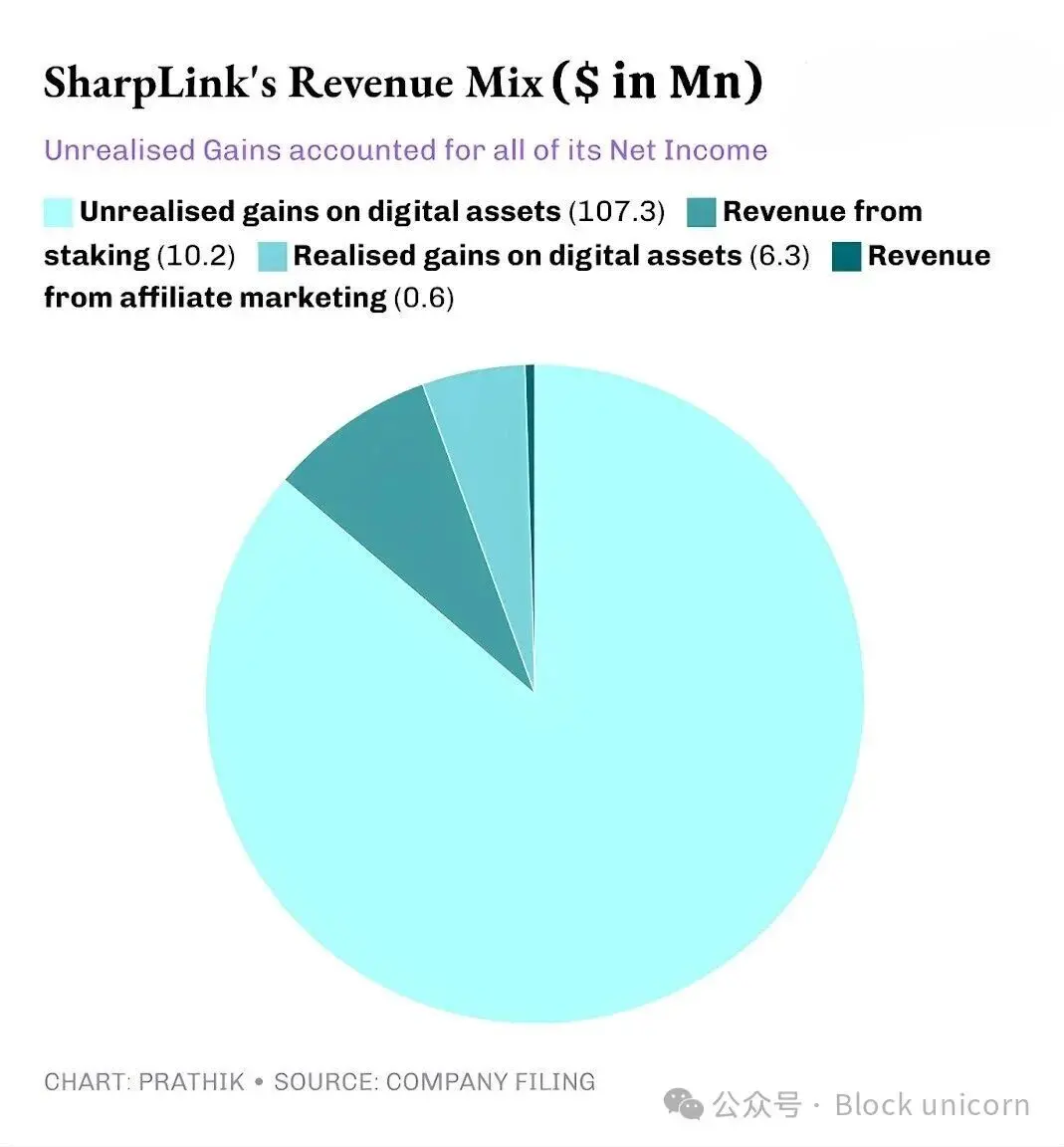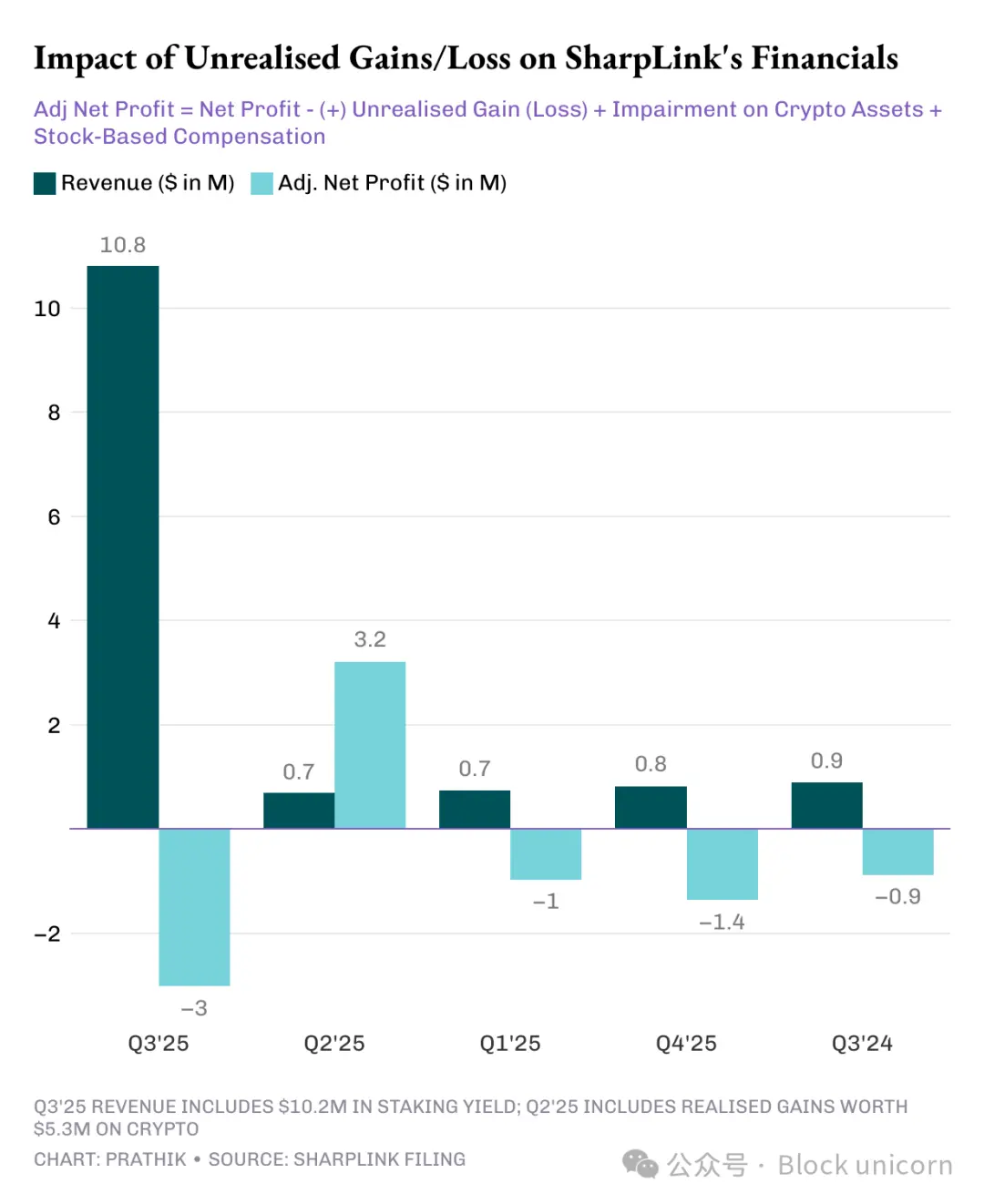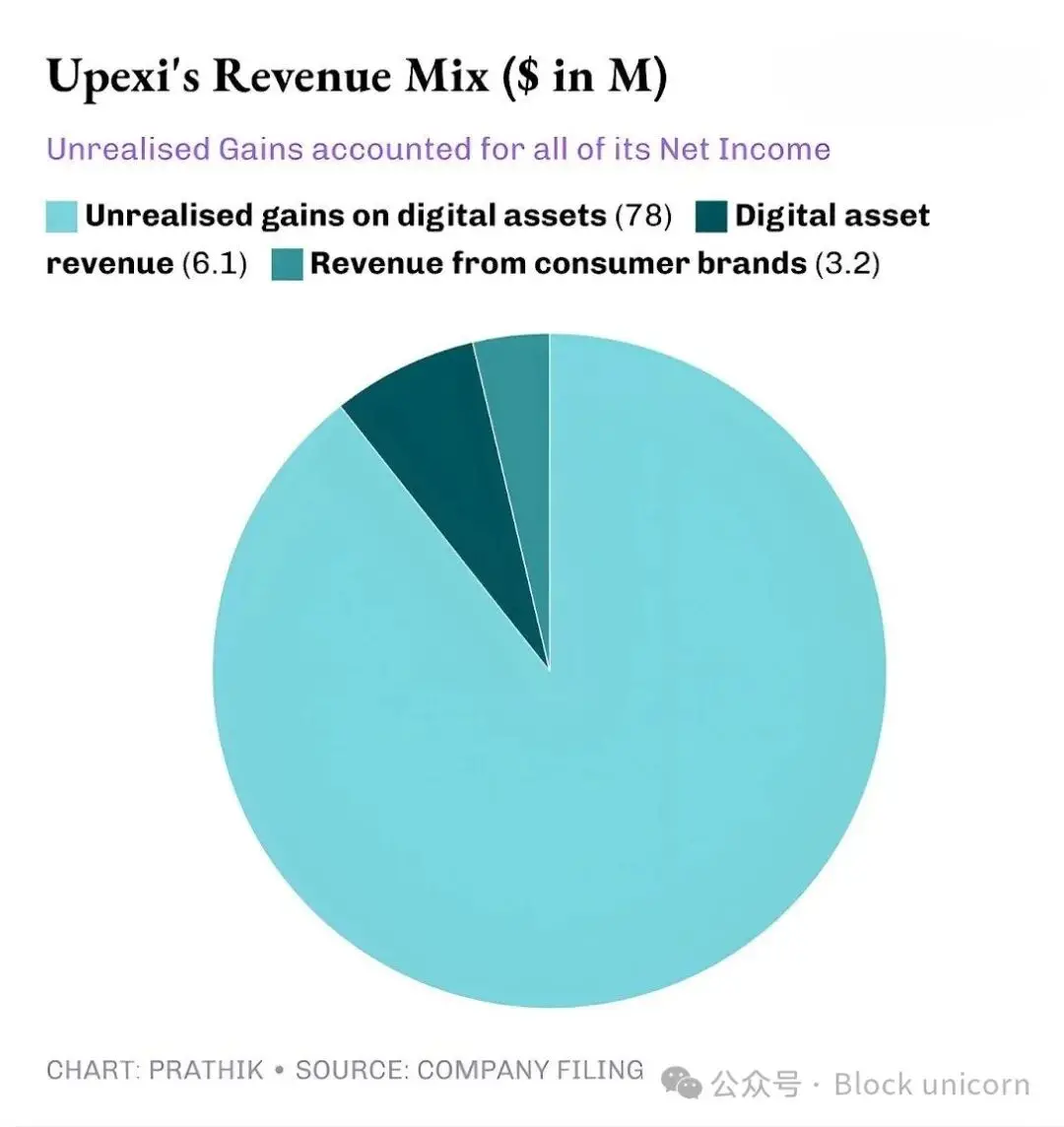Author: Prathik Desai
Translated by: Block unicorn
Introduction
I honestly don't know how I've managed to get through the past few weeks. The overwhelming financial statements nearly drowned me. I'm starting to question my love for numbers. It's not that I've analyzed too much, but rather that each of the six financial analysis reports I've written over the past three weeks has revealed some extremely rare information in our company's financial statements.
The financial status of Digital Asset Treasuries (DATs) is intricately intertwined with DeFi strategies, making it extremely challenging to analyze the company's financial performance.
Upexi and SharpLink Gaming released their quarterly financial reports this week, and they are the companies I've recently delved into regarding their financial status.
On the surface, they seem like ordinary businesses: one sells consumer brands, while the other is involved in sports betting affiliate marketing. However, only by digging deeper do you realize that what truly affects their valuations, determines their profitability, and shapes their overall image is not the warehouses or e-commerce platforms, but cryptocurrency.
Upexi and SharpLink have entered a realm that blurs the lines between corporate financing and cryptocurrency fund management.
In today's article, I will share the interesting findings I've discovered in the Ethereum and Solana treasuries, as well as the considerations investors need to be aware of before engaging with cryptocurrency through these avenues.
SharpLink's ETH Division
Less than a year ago, I would have described SharpLink as a niche sports affiliate marketing company, the kind that only comes to mind during the Super Bowl. Its financial status looked no different from other mid-sized peers: meager revenue, performance affected by the seasonal fluctuations of sports event schedules, and a profit and loss statement that frequently showed losses.
There were no signs that the company had a $3 billion balance sheet.
All of that changed in June 2025 when the company made a decision that reshaped its image: designating Ethereum as its primary treasury asset and becoming one of the leading companies holding ETH.
Since then, the company has restructured its business around Ethereum management, led by Joe Lubin. The Ethereum co-founder and founder and CEO of Consensys joined SharpLink at the end of May as the chairman of the board.
In recent months, SharpLink has directly invested funds into native staking, liquid staking, and DeFi protocols, shifting its business focus to Ethereum. Three months later, this shift has already shown results.
SharpLink reported quarterly revenue of $10.8 million, an 11-fold increase from $900,000 in the same period last year. Of this, $10.2 million came from staking income from its ETH treasury, while only $600,000 came from its traditional affiliate marketing business.

SharpLink's total assets grew from $2.6 million on December 31, 2024, to $3 billion on September 30, 2025.
At the end of the quarter, SharpLink held 817,747 ETH, which had increased to 861,251 ETH by early November. It is now the second-largest company by the number of ETH held. Its revenue growth of 11 times is entirely attributed to this treasury segment.
In this quarter, nearly 95% of SharpLink's revenue came from the earnings generated by its ETH staking. While its net profit skyrocketed 100 times to $104.3 million, compared to a net loss of $900,000 in the third quarter of 2024, there is a hidden issue. Like most other DAT projects, SharpLink's entire profit comes from the unrealized gains of its held ETH.

This is because U.S. Generally Accepted Accounting Principles (GAAP) require companies to value assets at fair market value at the end of the accounting period. The contribution of affiliated companies to profits is negligible.
Therefore, all these unrealized gains are essentially non-cash. Even the income SharpLink earns from staking rewards is paid in ETH, rather than being regularly converted into fiat currency. This is precisely where my concerns lie.
Although non-cash income is still counted as revenue in accounting, the company has consumed $8.2 million in operating cash over nine months to pay for salaries, legal and audit fees, and server costs.
And where did these dollars come from?
Like most other DATs, SharpLink funded its increased ETH holdings by issuing new shares. The company raised $2.9 billion this year through equity issuance, followed by a $1.5 billion stock buyback authorization to offset equity dilution.
This is a version of the DeFi flywheel effect, which is becoming increasingly common in DATs.
SharpLink issues stock and uses the proceeds to purchase ETH. It stakes ETH to earn returns, records unrealized gains as ETH prices rise, and reports higher accounting profits, which enables it to issue more stock. This cycle continues.
As I've noted in other DAT cases, this model works well in bullish cycles. Even through several bear market cycles, as long as the company's cash reserves are sufficient to cover cash expenditures, the model can function normally. Rising ETH prices enhance the balance sheet, and the treasury's value grows faster than operating costs, providing the market with a liquid Ethereum public proxy with yield enhancement.
When prices consolidate for an extended period (which is not new for Ethereum holders), combined with high corporate costs, this vulnerability becomes apparent.
We also see similar risks in the case of Bitcoin fund management giant Strategy.
I expect that almost all DAT projects will face these risks, regardless of which cryptocurrency they invest in, unless they have substantial cash reserves and healthy profitability to support their DAT projects. However, we rarely see profitable companies fully commit to the cryptocurrency space.
We see this when Strategy chases BTC while SharpLink bets on ETH. The situation is quite similar for the Solana treasury.
Upexi's Solana Factory
SharpLink has almost completely transformed from a betting affiliate company into an Ethereum treasury, while Upexi, even though it still retains the old shell of a consumer brand company, has embraced Solana.
I've been following Upexi for some time. From an operational perspective, most of their performance over the past five fiscal years has been positive. Brand acquisitions and revenue growth have performed well, and the gross margin is satisfactory. However, from a corporate perspective, Upexi has reported net losses for the past four fiscal years.
Perhaps this is what prompted the company to incorporate digital assets into its financial statements. Over the past two quarters, this shift, although modest, has been noticeable. In this quarter, digital assets have taken a dominant position in the company's financial statements.
In the third quarter of 2025, Upexi reported revenue of $9.2 million, of which $6.1 million came from SOL staking, and the remaining $3.1 million came from its consumer brand business. For a consumer goods company that reported zero revenue from cryptocurrency business in the previous quarter, having two-thirds of its revenue come from digital asset staking is undoubtedly a significant leap.

Upexi currently holds 2.07 million SOL tokens, valued at over $400 million, of which approximately 95% are staked. In just this quarter, they earned rewards of 31,347 SOL tokens through staking.
The biggest difference between Upexi and other DATs lies in its strategy for acquiring locked SOL.
The company purchased approximately 1.05 million locked SOL at an average market discount of 14%, with unlocking periods ranging from 2026 to 2028.
The locked tokens cannot be sold at present, hence the lower trading price. As these locked SOL tokens unlock, their value will naturally rise to the same level as normal SOL tokens, allowing Upexi to earn staking rewards while also benefiting from the built-in price appreciation of these SOL tokens.
This approach is more akin to a hedge fund than a typical DAT. However, when you look at Upexi's cash flow, the same concerns arise—similar to SharpLink.
This strategy typically appears in hedge funds rather than ordinary DATs (Digital Asset Treasuries). But when you examine Upexi's cash flow, you find the same issues as with SharpLink.
Although Upexi reported a net profit of $66.7 million, with unrealized gains of $78 million, the company still recorded an operating cash outflow of $9.8 million. Since the income from staking SOL has not been converted into fiat currency, it remains non-cash income. Consequently, the company has taken measures that other DATs, which primarily rely on capital reserves, typically adopt: financing.

Upexi raised $200 million through convertible bonds and secured a $500 million equity financing line. Its short-term debt increased from $20 million to $50 million.
The same flywheel, but similar risks. What happens if SOL cools off for a year?
Both SharpLink and Upexi are creating some clever products. But that doesn't mean they can sustain their growth.
No Simple Answers
There is a pattern here that I cannot ignore: both companies are operating financial systems that make sense when economic conditions are favorable. They have both established treasuries that can scale with network activity; they have both devised revenue structures that can supplement income sources; and through these initiatives, they have become two of the most significant public proxies for the world's top Layer-1 blockchains.
However, nearly all of the profits for both companies come from unrealized gains, the earned token income lacks liquidity, there are no signs of systematically converting treasury assets to confirm profits, they report negative operating cash flow, and they rely on capital markets to pay their bills.
Rather than being a criticism, this is a reality and trade-off that every company adopting the DAT structure must face.
To sustain this model, one of the following two scenarios must occur: either staking must truly become a cash engine for the company, continuously funding the purchase of digital assets; or the company must incorporate a planned sale of digital assets into its digital asset strategy to achieve systematic profits.
This is not impossible. SharpLink earned $10.3 million through ETH staking, while Upexi earned $6.08 million through SOL staking.
These amounts are not insignificant. Even if a portion of them is reinvested into the fiat currency system to support operations, the ultimate outcome could change.
Before this, both Upexi and SharpLink faced the same dilemma: balancing extraordinary innovation with capital market liquidity.
That's all for today; see you in the next article.
Recommended reading:
Rewriting the 2018 script, U.S. government shutdown ends = Bitcoin price will soar?
$1 billion stablecoin evaporates, what’s the truth behind the DeFi chain explosion?
MMT short squeeze event review: a carefully designed money-making game
Click to learn about job openings at ChainCatcher
免责声明:本文章仅代表作者个人观点,不代表本平台的立场和观点。本文章仅供信息分享,不构成对任何人的任何投资建议。用户与作者之间的任何争议,与本平台无关。如网页中刊载的文章或图片涉及侵权,请提供相关的权利证明和身份证明发送邮件到support@aicoin.com,本平台相关工作人员将会进行核查。



